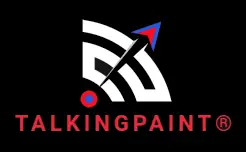Creating an energy saving initiative for your facility may seem like a daunting task. Most industrial manufacturers will look for savings in their process energy use, reduction of steam consumption, and improved output per BTU. But if you think beyond equipment only, and include the buildings that house manufacturing processes and office staff, you can get the most out of your sustainability program, and the best way to do this is through a section-by-section approach Also, many plant managers don’t realize that they can get their product vendors to do most of the work on the payback calculations for them.
Steps for Whole Facility Evaluation and Implementation
There are a few key steps for a whole facility energy efficiency evaluation. By identifying your key energy consumption areas and mapping them out in an Energy Efficiency Map, you can ensure a successful and thorough planning and implementation process. Below are three steps you can’t afford to ignore.
Step 1: List out the highest energy consumption areas in your company, and separate these into equipment and buildings
Below is an example of how this step might look:
Heating and Cooling consumption for buildings (List cost of annual energy consumption)
Specific areas of building envelope:
1. Roof over main building (1500m2)
2. Perimeter walls (4500m2)
b. Energy used for lighting (List cost of annual energy consumption)
c. Steam Pipes at 170C (Cost of annual energy consumption)
Specific areas:
1. Boiler Room Steam Pipes (20cm diameter x 50 meter length)
2. Manufacturing Area Pipes (30cm diameter x 85 meter length)
d. Heated Storage Tanks at 90C (Cost of annual energy consumption)
Specific areas:
1. Fuel Storage Tanks (6 meter diameter x 8 meter height)
Continue for each of the areas where your company would like to reduce energy costs.
Let Your Vendors Do the Work:
With a few key data points, which include the surface and area type, the surface temperature for equipment, the dimensions of the area, and the current energy consumption average, a vendor like temperature control coatings manufacturer Syneffex™, can provide for you with a personalized specification including projected savings and payback, which you can then use as a roadmap to your energy saving project implementation.
Companies often ask us to provide them with detailed recommendations for energy savings, and we only need a few pieces of key information to provide a free detailed energy savings assessment with projected project payback.
Step 2: Identify Technology that May Help You Meet Your Needs
Separate areas where insulation would save energy from areas where equipment, such as lighting, would save energy. This will help you identify the correct companies to contact.
For example, for your insulation needs, a company like Syneffex™ could offer a recommendation for any insulation on both buildings or equipment. For things such as lighting or boiler economizer equipment, you would want to contact the proper manufacturer that could assist you with that equipment.
Step 3: Evaluation of Recommendations
Once you’ve received the recommendations and cost/payback analysis from the vendor companies, you have the data you need to make the best decision for starting your energy efficiency program. By having this detailed map ahead of time, with matching vendor proposals, you and your colleagues can decide some key points, such as:
What areas to implement first.
The timing for implementing projects in each area.
How the estimated cost and payback will benefit your company.
New Technologies to Consider for Your Energy Efficiency Map
You may be tempted to simply contact vendors that you have been using for years, but don’t neglect researching new upcoming technologies. Improvements to technology are being made all the time, especially in the area of nanotechnology. So, you will be pleasantly surprised by the options you now have for energy savings that may not have been available a decade ago.
Creating your own Energy Efficiency Map and identifying and implementing programs can be easier than you realize. By simply mapping out energy intensive areas, both equipment and buildings and letting the vendors do the work to provide you with recommendations and cost/payback analysis, you could begin saving energy dollars right away.




